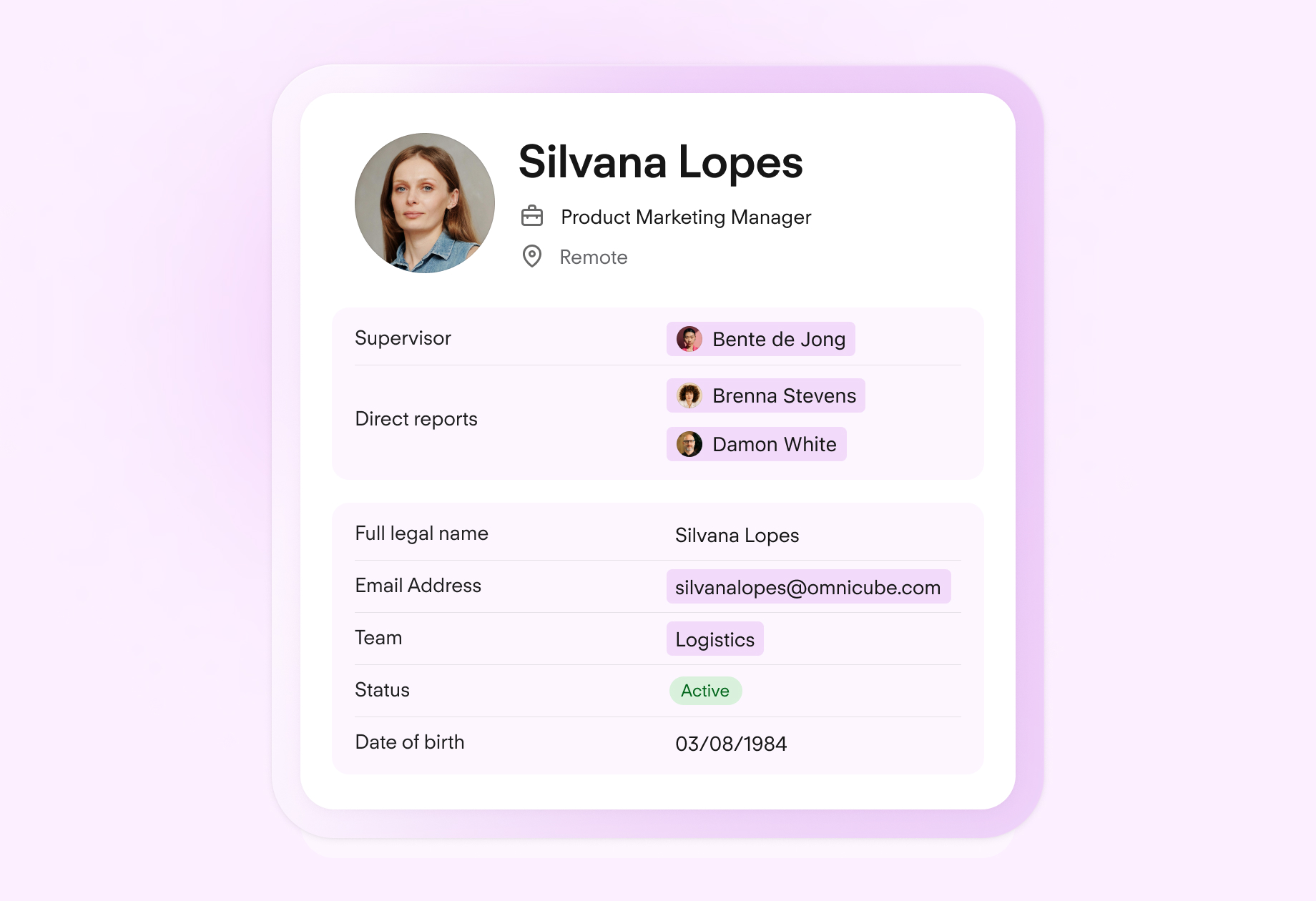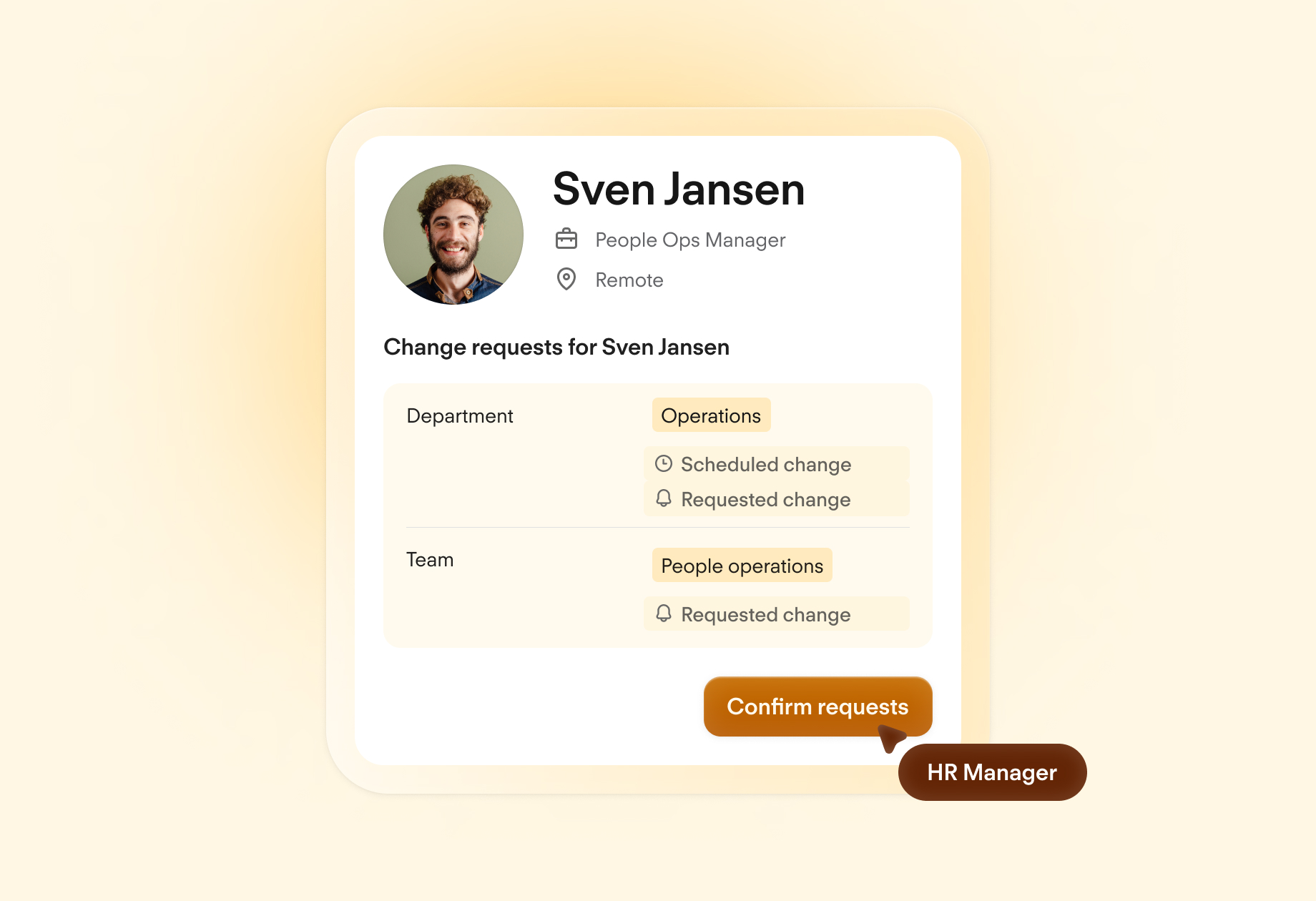Voluntary redundancy: How it works in practice

Voluntary redundancy is never an easy topic, because it's always hard to let go of an employee. It’s a process that no one, neither employees or management, particularly enjoy. Yet, it may be the reality for your HR team at some point in time.
If you give people the choice, though, it may be easier to manage. This complete guide to voluntary redundancy in the UK helps employers manage this process in a meaningful way.
Download our exit interview template to ensure your offboarding is always productive.Contents
- 1What is voluntary redundancy?
- 2Is offering voluntary redundancy risky?
- 3Template for choose redundancy volunteers
- 4Understanding UK employee rights for voluntary redundancy
- 5How can employers protect themselves during the redundancy process?
- 6How much do companies pay for voluntary redundancy?
- 7What is the voluntary redundancy process?
- 8Other helpful resources on redundancy
- 9How do you do voluntary redundancy right?
What is voluntary redundancy?
Voluntary redundancy is the process of an employee choosing to take redundancy. This is meant to terminate employment in exchange for some kind of redundancy payout.
While employees can negotiate the terms of their voluntary redundancy packages, the employee can’t actually refuse redundancy.
How does the voluntary redundancy process work?
The voluntary redundancy process hinges on a few key factors. First, it is absolutely critical to make sure the selection process you use to invite people is clear and fair.
Additionally, it’s very important to let employees know that just because they’ve volunteered, doesn’t mean they will automatically be selected.
For example: If an employee who volunteers for redundancy has a business-critical role. In this case, it’s entirely possible that the business could decide to keep them.
It’s also worth noting that gov.uk suggests an alternative way of reducing staff overheads, without making them redundant: That is to ask employees to take early retirement instead.
Why might a company offer voluntary redundancy?
The biggest reason for a company to offer voluntary redundancies comes down to cutting down on costs.
That said, there can also be other reasons for making redundancies. This can include:
Reason | Explanation |
|---|---|
Role Relevancy | The role that an employee was doing is no longer relevant to the company (due to restructuring, business changes, or environmental factors). |
Technologies | New systems or technology in the workplace means jobs are no longer necessary. |
Job Existence | The job no longer exists because other people are doing it instead. |
Business Failure | The business becomes insolvent or bankrupt. |
Location Change | The business moves their offices. |
Business Transfer | The business is transferred to another employee |
Additional Crises | A crisis happens that requires headcount to be reduced. |
Generally, offering voluntary redundancy can also be less painful for all involved. It can be empowering, giving employees the choice to control their future.
Some employees may actually prefer to take redundancy for varied reasons, including:
Relishing the opportunity to change jobs
Using the payout to start their own business
Changing their life-role e.g. to be a full-time parent
Capitalizing on already wanting to leave
Is offering voluntary redundancy risky?
Voluntary redundancy may be able to dull what is otherwise a painful process, but it comes with its own set of disadvantages. In fact, while employees get to decide who stays and who goes, seeing which volunteers volunteer may lead to a nasty surprise.
Concerned about attrition in your organization? Click here to read our guide.
You may also risk losing more staff than desired, even if you have the choice. Forcing employees to remain may be damaging to morale, especially when you know that they would potentially be open to leaving entirely.
For this reason, it is often wise to prepare a scoring framework. This could ultimately help businesses choose who to accept, if multiple people volunteer for redundancy.
Template for choose redundancy volunteers
When putting a framework to identify who would be suitable for voluntary redundancy you might choose to include factors like:
How will it impact the business as a whole if they leave?
Will we have enough people remaining to do this job, or in this department, if this person leaves?
Can we rely on people who are more junior or senior to take on this role’s responsibilities if they go?
Would it be better to keep this person, now that we know they want to go, or to accept their desire to be made redundant?
Can we afford to pay for their redundancy? (In the case of employees who have been with the company for a long time, redundancy can sometimes be the equivalent of months or even years’ worth of pay!)
Remember: A person’s role is made redundant, not the person themselves! You can’t make someone redundant (even if they volunteer) and then immediately employ someone else to do the same role.
Understanding UK employee rights for voluntary redundancy
Employees have the same legal rights, regardless of whether they volunteer for redundancy or are selected. As we covered in this blog post on what employers need to know about redundancy pay:
There are statutory redundancy pay periods and minimum payment amounts:
If an employee has been working for your company for two years or more, continuously, they will be entitled to statutory redundancy pay.
Once they have worked as an employee for more than two years and are under the age of 22, they must receive half a week’s pay for each full year. If they are between 22 and 41 years old they receive one week’s pay. Over the age of 41, they receive 1.5 weeks of pay.
There is a difference between redundancy and severance pay (severance pay is generally higher).
Redundancy pay isn’t always mandatory. However, voluntary redundancy payment is required and must meet the statutory requirements, at a minimum.
Employees also have certain rights during redundancy notice periods, including the right to take a reasonable amount of time off work to look for a new job or arrange training.
They also have the right to receive a written explanation of how you calculated their redundancy pay.
The first £30,000.00 of redundancy pay is free from tax and National Insurance payments.
Centralise your employee data

Stop relying on lists and spreadsheets. Organise and edit personnel files and documents with ease, all in one secure, legally compliant place.
Protect your people filesHow can employers protect themselves during the redundancy process?
Always follow the stipulated redundancy processes and guidelines set out by law.
Additionally, employers should also be careful to take steps to avoid any signs of unfair redundancy. So, err on the side of caution and over-explain the decision-making process to employees.
Be aware that selecting employees or preventing them from taking voluntary redundancy based on their gender, age, disability, or other protected characteristics could be considered discrimination.
So, to avoid any claims of unfair dismissal (and because it’s the right thing to do), be fair and objective.
How much do companies pay for voluntary redundancy?
Voluntary redundancy should be calculated using the standard government formulae. You can use the gov.uk statutory redundancy pay calculator to work out how much to pay them.
Alternatively, as we explain in our blog post on severance pay in the UK, it’s also possible to pay employees more than the statutory requirements – as the statutory amount is simply a minimum value.
For example, employees’ voluntary redundancy pay may be increased in the following (or other) circumstances:
When the company is being generous
When employees negotiate a higher offer
When other factors (such as leave, shares, or bonuses) are considered as part of their voluntary redundancy package
What is the voluntary redundancy process?
Voluntary redundancy must follow the same process as normal redundancies. The processes are quite clearly laid out by gov.uk in their information about making staff redundant. If you follow these processes, in a voluntary circumstance, you’ll be fine.
It’s worth paying particular notice to:
Redundancy consultations (click here for our full guide)
The importance of giving staff notice and
What happens when you’re dealing with large-scale or collective redundancies. (This ACAS booklet is very helpful on the subject).
Whatever processes you do follow, though, be sure to document every stage, every letter, every meeting, and every note.
Fortunately, there are HR experts who deal with documentation every single day and can make it easy to keep track of all HR-related processes and procedures.
Learn more about employee document management with Personio by clicking this link.
Other helpful resources on redundancy
You might also find it valuable to check out the other articles that Personio has written on redundancy and related subjects, including:
How do you do voluntary redundancy right?
At the end of the day, if redundancies are handled with compassion, clarity, and fairness it might be possible to help employees leave gracefully and without resentment. That’s often the best you can expect.
However, if voluntary redundancy packages are generous, they might actually provide the fresh start in life that a soon-to-be-previous employee needs in order to move on to better things.
Bear this in mind as you go through the process. Not all endings are bad. Sometimes endings are just a way to start new beginnings.
Disclaimer
We would like to draw attention to the fact that our web offer is for non-binding information purposes only and does not constitute legal advice in the actual sense. The content of this offer cannot and is not intended to replace individual and binding legal advice that addresses your specific situation. In this respect, all information offered is without guarantee of accuracy and completeness. The contents of our website – especially the legal articles – are researched with the utmost care. Nevertheless, the provider cannot assume any liability for the correctness, completeness, and topicality of the information provided. In particular, the information is of a general nature and does not constitute legal advice in individual cases. For the solution of specific legal cases, please consult a lawyer.


